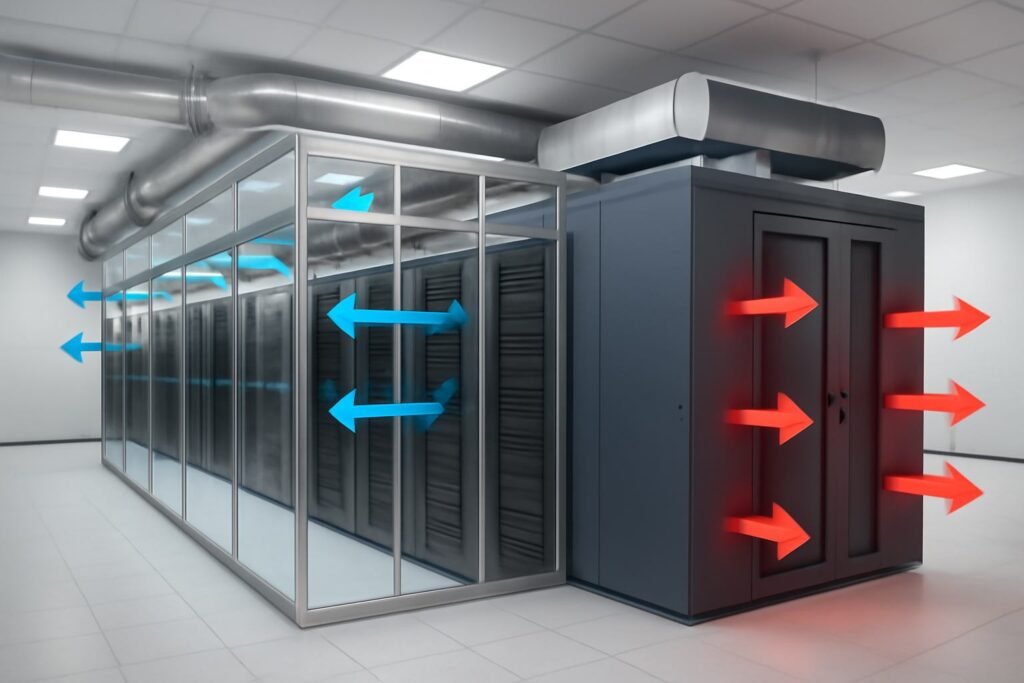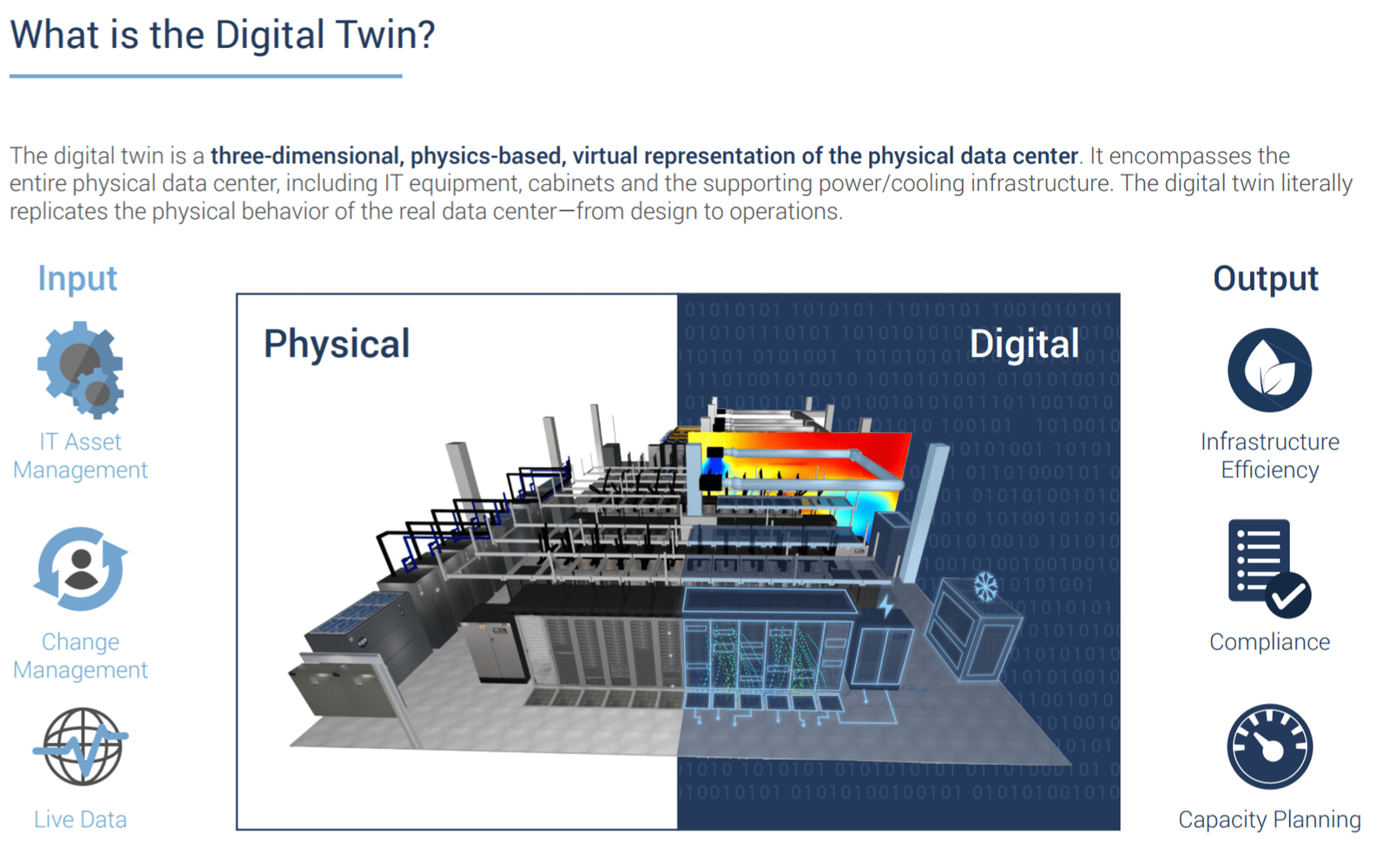
Table of Contents
Introduction
As the world grows ever more connected, the demand for high-performance, reliable, and energy-efficient data centers is at an all-time high. These facilities power everything from streaming video to financial transactions and scientific research. Yet, despite incredible advances in server technology and storage density, the fundamental challenge of heat removal remains a top priority for data center designers and operators.
Cooling costs typically account for 30–50% of a data center’s energy consumption. An inefficient cooling strategy can lead to hotspots, equipment failures, increased operating costs, and a higher carbon footprint. Therefore, data center operators are constantly looking for ways to improve thermal management while maintaining or reducing energy use.
Cold aisle and hot aisle containment systems have emerged as essential strategies in modern data center airflow management. While these concepts are not new, their successful implementation requires detailed planning, precise engineering, and thorough analysis to deliver maximum efficiency.
In this article, we will explore:
- The basics of cold aisle and hot aisle containment
- The theory behind airflow separation
- The efficiency advantages of containment
- Key design considerations and best practices
- Computational Fluid Dynamics (CFD) in containment analysis
- Case studies and real-world results
- Challenges and pitfalls
- Future trends in containment technology
By the end of this analysis, you’ll understand why containment is not just an accessory but an essential component of any high-performance, energy-efficient data center.
1. Understanding Airflow in Data Centers
To appreciate the role of containment, it’s important to understand the basic airflow challenge in data centers.
Servers generate large amounts of heat, which must be reliably removed. Most data centers use air-based cooling systems, where cool air is delivered to the server inlets (the “cold side”), and hot air is exhausted at the outlets (the “hot side”).
Without proper airflow management, mixing of cold and hot air can occur. This mixing leads to:
- Higher inlet temperatures at server racks
- Overheating and thermal alarms
- Increased load on cooling units
- Higher fan speeds and energy use
- Increased risk of downtime
A traditional uncontained data center relies on large volumes of chilled air to “wash” the room in coolness, an inherently wasteful approach.
Containment strategies aim to eliminate this mixing by physically separating cold and hot air paths.
2. What Is Cold Aisle and Hot Aisle Containment?
Containment systems work by enclosing either the cold aisle or the hot aisle between rows of server racks.
Cold Aisle Containment (CAC)
- The cold aisles are physically enclosed with doors and a roof or panels.
- Cool air from the raised floor (or overhead ducts) is contained in this aisle.
- Servers pull in air at consistent, low temperatures.
- Hot air is exhausted into the open room.
Hot Aisle Containment (HAC)
- The hot aisles are enclosed instead.
- Servers still face the cold aisle and draw in cool air from the room.
- Hot exhaust air is contained and directed back to the return plenum or CRAC/CRAH units.
Key Difference:
- CAC contains the supply (cold) air.
- HAC contains the return (hot) air.
Both systems aim to maintain strict separation between supply and return airflow paths.
3. The Theory of Airflow Separation
In an ideal data center cooling system, air follows a shortest-path flow:
- Cool air moves directly from supply (floor tiles or ducts) to server inlets.
- Heated air exits server outlets and is immediately returned to cooling units.
However, real-world facilities without containment suffer from:
- Recirculation: Hot air from exhaust re-enters server inlets.
- Short-circuiting: Cool air from supply bypasses equipment and returns directly to cooling units.
Both problems waste energy and reduce cooling capacity.
Containment minimizes recirculation and short-circuiting, ensuring that every unit of chilled air does useful work.
4. Efficiency Advantages of Containment
Implementing aisle containment offers numerous efficiency gains:
4.1 Improved Temperature Consistency
- Without containment, server inlet temperatures can vary significantly across the room.
- Containment delivers uniform temperatures to all server inlets, reducing the risk of hotspots.
4.2 Higher Supply Air Temperature Setpoints
- By eliminating mixing, operators can safely raise supply air temperatures while maintaining safe server inlet temperatures.
- Higher setpoints mean cooling systems work less hard and can use more free cooling.
Example: Raising supply setpoint from 18°C to 24°C can cut cooling energy costs significantly.
4.3 Lower Fan Power
- Better airflow management reduces the need for high CRAH or CRAC fan speeds.
- Less fan energy consumption = lower operating costs.
4.4 Better Use of Economizers
- With elevated setpoints, airside or waterside economizers can operate more hours per year, reducing mechanical cooling.
4.5 Reduced Overprovisioning
- More predictable thermal performance allows designers to specify fewer or smaller cooling units.
- Capital cost savings in addition to operational efficiency.
4.6 Higher Rack Densities
- Containment supports denser deployments by managing heat more precisely.
- Essential for modern high-density racks with 20–40+ kW loads.
5. Design Considerations for Efficient Containment
While the principle is simple, effective containment design requires careful planning.
5.1 Aisle Orientation and Layout
- Servers should be arranged in consistent hot aisle/cold aisle configurations.
- Misaligned racks defeat the separation effect.
5.2 Containment Materials
- Transparent polycarbonate or glass allows visibility.
- Solid panels reduce air leakage.
- Fire-rated materials may be required for code compliance.
5.3 Doors and Roof Panels
- Doors at aisle ends must seal effectively.
- Roof panels (for CAC) prevent overhead mixing but may need to be removable for fire suppression.
5.4 Floor Tile Placement
- For CAC, perforated tiles or grilles must be precisely aligned with contained aisle to deliver air where needed.
- Misplaced tiles cause short-circuiting.
5.5 Return Air Paths
- For HAC, ducting or return plenums must capture and direct hot air back to cooling units.
- Leaks in return paths reduce efficiency.
5.6 Ceiling Heights
- High ceilings can create stratification challenges.
- Containment must extend fully to prevent mixing above racks.
5.7 Integration with Fire Suppression
- Containment enclosures must not obstruct sprinkler coverage.
- Drop-out ceiling panels or fusible links may be required.
Best Practice: Early coordination among architects, MEP engineers, and IT planners is essential to ensure a containment strategy that works within the building design.
6. Comparing Cold Aisle vs. Hot Aisle Containment
Cold Aisle Containment Pros
- Easier retrofit in some raised-floor designs.
- Simpler to maintain consistent inlet temperatures.
- Lower initial cost in some configurations.
Cold Aisle Containment Cons
- The data hall becomes a hot environment, which can be uncomfortable for staff.
- More heat load in the room can increase heat transfer through walls/envelope.
Hot Aisle Containment Pros
- The general data hall remains cool and comfortable.
- Heat is more directly captured and returned to cooling units.
- Better compatibility with overhead return plenums.
Hot Aisle Containment Cons
- May require more ductwork or structural changes.
- Higher initial cost.
- Slightly more complex to retrofit in some facilities.
Verdict: Both strategies are effective when properly implemented. The choice depends on facility layout, cooling design, and retrofit constraints.
7. The Role of CFD Simulation in Containment Analysis
While design guidelines help, airflow is a complex three-dimensional phenomenon that is hard to predict with rules of thumb alone.
Computational Fluid Dynamics (CFD) simulation is now standard practice for validating and optimizing containment designs.
Benefits of CFD Analysis:
- Visualize airflow paths and temperature distribution.
- Identify and correct recirculation zones.
- Optimize tile layouts and fan speeds.
- Evaluate failure scenarios (e.g. CRAH outage).
- Test different containment approaches virtually before building.
Typical CFD Workflow for Containment:
- Import 3D building and rack layouts.
- Define cooling unit capacities and airflow supply characteristics.
- Simulate steady-state and transient airflow/temperature fields.
- Analyze hot spots, airflow short-circuiting, pressure differentials.
- Recommend design improvements.
At EXPERIQS, we use CFD to help clients validate containment designs in both new builds and retrofits, ensuring maximum efficiency and performance.
8. Real-World Case Studies
Case Study 1: Hyperscale Data Hall
- Challenge: Consistent inlet temperatures across 30 m wide cold aisles.
- Solution: CFD analysis identified underfloor obstructions and optimized tile placement.
- Result: Inlet temperature variation reduced from 8°C to 2°C. PUE improvement of ~0.07.
Case Study 2: Retrofit of Legacy Facility
- Challenge: Legacy data center with inconsistent airflow, overheating racks.
- Solution: Installed hot aisle containment with dedicated overhead return ducting.
- CFD validated design before installation.
- Result: Allowed safe increase of supply setpoint from 19°C to 24°C, cutting cooling energy by 25%.
Case Study 3: Edge Data Center Module
- Challenge: Very high rack densities (30 kW) in compact modular design.
- Solution: Cold aisle containment with direct-to-chip liquid cooling integration.
- Result: Enabled ultra-high-density deployment with minimal energy penalty.
9. Challenges and Pitfalls in Containment Projects
Despite the promise, containment systems can fail to deliver expected results if poorly implemented.
Common Mistakes:
- Incomplete sealing (doors left open, leaky panels)
- Misaligned racks breaking aisle separation
- Poor underfloor management causing uneven supply
- Inadequate return paths in HAC systems
- Neglecting integration with fire suppression systems
- Failure to plan for operational flexibility
Containment is not a “set it and forget it” solution. It requires:
- Careful design
- Rigorous installation
- Ongoing maintenance and monitoring
10. The Future of Containment and Airflow Management
Containment will continue to evolve in step with data center technology trends.
10.1 Liquid Cooling Integration
- As direct-to-chip or immersion cooling grows, hybrid designs will combine air and liquid cooling.
- Containment strategies will adapt to manage residual air heat loads.
10.2 AI-Driven Control
- Sensors and machine learning will dynamically adjust fan speeds, setpoints, and damper positions for optimal efficiency.
- Containment systems will become more “smart” and responsive.
10.3 Modular and Prefabricated Designs
- Factory-built modules will incorporate optimized containment by design.
- Simplifies deployment while ensuring best-practice airflow management.
10.4 Sustainability Focus
- Higher setpoints enabled by containment reduce energy use.
- Supports lower-carbon operation, essential as data centers target net-zero goals.
Conclusion
Cold aisle and hot aisle containment are not optional upgrades—they are fundamental strategies for any modern, efficient data center.
By physically separating cold and hot air streams, containment systems:
- Reduce mixing and recirculation
- Enable higher supply air temperatures
- Cut energy costs
- Improve thermal consistency
- Support higher rack densities
- Enhance overall reliability
But to deliver these benefits, containment must be designed and implemented carefully, with attention to every detail from floor tiles to ceiling plenums.
At EXPERIQS, we partner with data center designers and operators to deliver scientific, evidence-based containment solutions using advanced CFD simulation, deep engineering expertise, and a commitment to real-world performance.
Ready to maximize your data center’s cooling efficiency through proven containment strategies?
Contact the EXPERIQS team today to learn how we can help you design, analyze, and implement the perfect containment solution for your facility.








